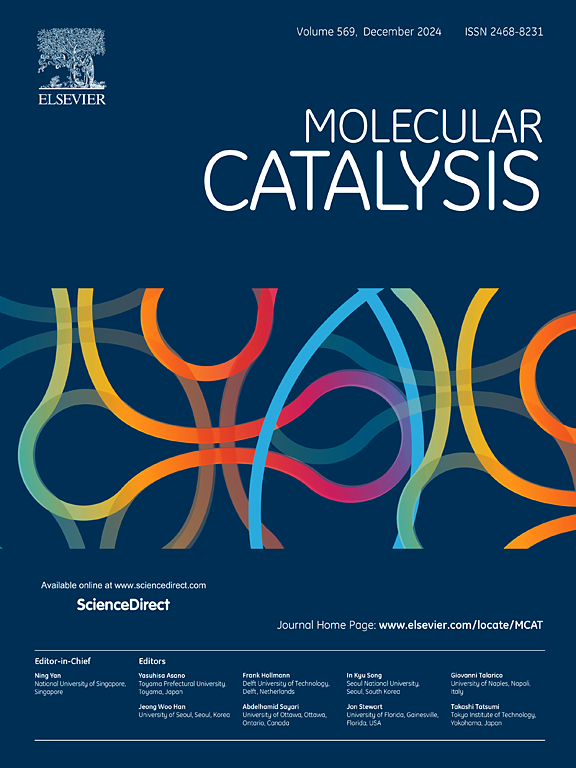Competitive effects of polymeric ligands molecular weight on the gold colloidal nanocatalysts: Impact of catalysts design and catalytic performance
IF 3.9
2区 化学
Q2 CHEMISTRY, PHYSICAL
引用次数: 0
Abstract
This research investigates the influence of hydro-soluble polymeric ligands on the properties and catalytic performance of colloidal gold nanoparticles supported on activated carbon. The aim was to understand how polymer molecular weight affects Au nanoparticle size, dispersion, and catalytic activity, providing a framework for optimizing catalysis from the design phase. Three polymeric ligands (PVA, PEO, and PVAm) with different molecular weights were synthesized via controlled chain-transfer-to-solvent reactions and used to prepare supported colloidal Au nanoparticles through sol-immobilization. The results demonstrated that molecular weight significantly impacts Au nanoparticle size. Moreover, catalytic activity was assessed using the reduction of 4-nitrophenol as a model reaction. As polymer molecular weight increased, the apparent kinetic constant (kapp) decreased, particularly for PEO-based catalysts, where kapp decreased by an order of magnitude. Higher molecular weight polymers also formed dense polymeric "brushes," hindering reagent diffusion and reducing catalytic performance. Further analysis of Au/polymer weight ratios revealed that decreasing polymer content improved catalytic activity, particularly in Au-PVAm catalysts. The findings underscore the crucial role of polymeric ligands in colloidal nanocatalyst design, emphasizing the need to investigate the metal-polymer interface to optimize catalyst properties.

求助全文
约1分钟内获得全文
求助全文
来源期刊

Molecular Catalysis
Chemical Engineering-Process Chemistry and Technology
CiteScore
6.90
自引率
10.90%
发文量
700
审稿时长
40 days
期刊介绍:
Molecular Catalysis publishes full papers that are original, rigorous, and scholarly contributions examining the molecular and atomic aspects of catalytic activation and reaction mechanisms. The fields covered are:
Heterogeneous catalysis including immobilized molecular catalysts
Homogeneous catalysis including organocatalysis, organometallic catalysis and biocatalysis
Photo- and electrochemistry
Theoretical aspects of catalysis analyzed by computational methods
 求助内容:
求助内容: 应助结果提醒方式:
应助结果提醒方式:


